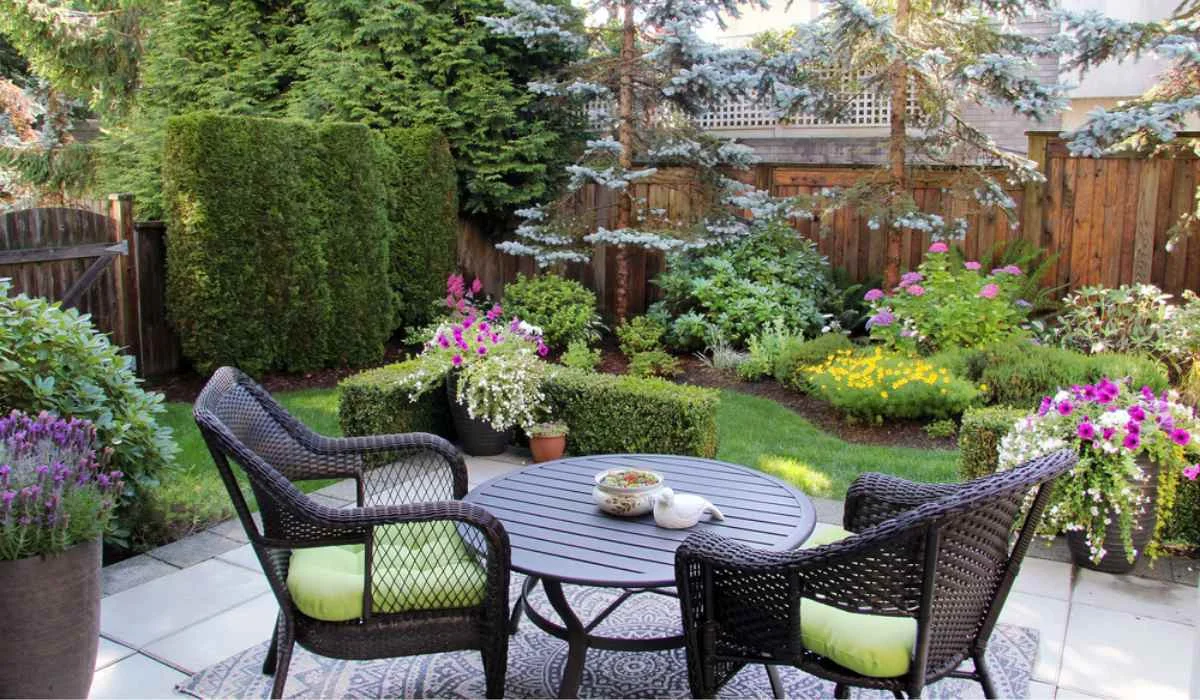Creating a garden that looks lush with minimal maintenance is appealing to many homeowners. Traditional landscapes often require hours of mowing, weeding, planting, watering and fertilizing.
Start by testing your soil and improving it with compost and other organic materials. This will reduce weed growth, help plants be more resilient to pests and diseases.
Plant Drought-Resistant Plants
Planting drought-resistant flowers, plants, and shrubs in a garden is one of the best low maintenance gardening ideas. Plants that are naturally adapted to dry climates, such as natives or those grown in xeriscaping gardens, tend to be drought tolerant. Choosing drought-resistant perennials, such as yarrow shown here, is an easy way to add color and texture to a garden without the constant need for watering.
These hardy plants have deep taproots that penetrate into the soil, drawing moisture even during prolonged dry periods. Cacti and succulents also thrive in a sunny, well-draining garden with free-draining soil.
When designing a drought-tolerant landscape, use porous materials for hardscape elements so that the water from irrigation systems or natural precipitation can soak into the ground rather than running off into the street and gutters. Adding a layer of mulch between the soil and the drought-tolerant plantings helps conserve even more moisture.
Grow Evergreen Shrubs
Evergreen shrubs provide greenery in the garden all year long. Many varieties grow low and slow, making them easy to maintain. They also tolerate a wide range of climates and soil types.
A few examples include Little Gem Norway Spruce (Picea abies ‘Little Gem’) and Manhattan Euonymus (Euonymus kiautschovicus ‘Manhattan’). Both grow only a foot or three feet tall and wide and are highly resistant to winter bronzing in cold climates. They can be used in garden beds as background plants or trimmed into a more formal hedge.
Other options include evergreen holly and hebes. Both have attractive foliage and produce colorful flowers or berries. Hebes come in a variety of shades and need little pruning to keep them tidy. They’re especially good for growing as ground cover and low-growing hedging. They thrive in full sun and partial shade, as well as a range of soil conditions. Evergreen holly is another popular choice for the southern garden because it grows well in coastal areas and doesn’t mind salty air.
Add Permanent Structures
Even the keenest gardeners will admit that watering plants on a daily basis at the height of summer is a laborious task. Instead, choose shrubs that need only a minimal amount of watering and keep themselves looking great with just occasional light pruning. Philadelphus ‘Belle Etoile’ and hydrangeas are both gorgeous options for sunny spots that don’t need much attention to remain attractive.
For a naturalistic look without the constant watering, plant a rock garden with drought-resistant flowers such as eryngiums or lavender. Then add a scattering of meadow-mix annuals to create a colorful summer display with minimal work.
Swapping your lawn for paving is an easy way to reduce the amount of maintenance needed in the garden. Use slab tiles such as these from Tile Mountain, for a hard landscaping option that looks smart and easy to keep clean. Alternatively, opt for slate or gravel ideas and make sure you use a weed-suppressing membrane underneath to reduce the workload.
Add Perennial Plants
Many luscious cottage-style flower beds overflowing with color look like they just happen, but that kind of beauty takes planning and thoughtful selection. Perennial plants are the backbone of a low-maintenance garden, since they come back year after year without the need to be replanted every spring.
Choose a variety of easy-care perennials that thrive in your garden’s light and soil conditions. Mixing blooming and foliage types adds interest to a flower bed, too. For example, the skinny, bright blue flowers of Veronica rhamnoides contrast with the flat, rounded blooms of coneflower.
Many perennials are easy to cut for indoor arrangements, including the dainty spiky petals of Coreopsis and the delicate lilac-colored flowers of Blazing Star. And a few species, like the variegated foliage of Heucherella and the hen-and-chicks-like flowers of Pearly Everlasting, also make excellent choices for bouquets. These flowers provide a veritable nectar buffet for butterflies, bees, and hummingbirds. They also offer color throughout summer.


